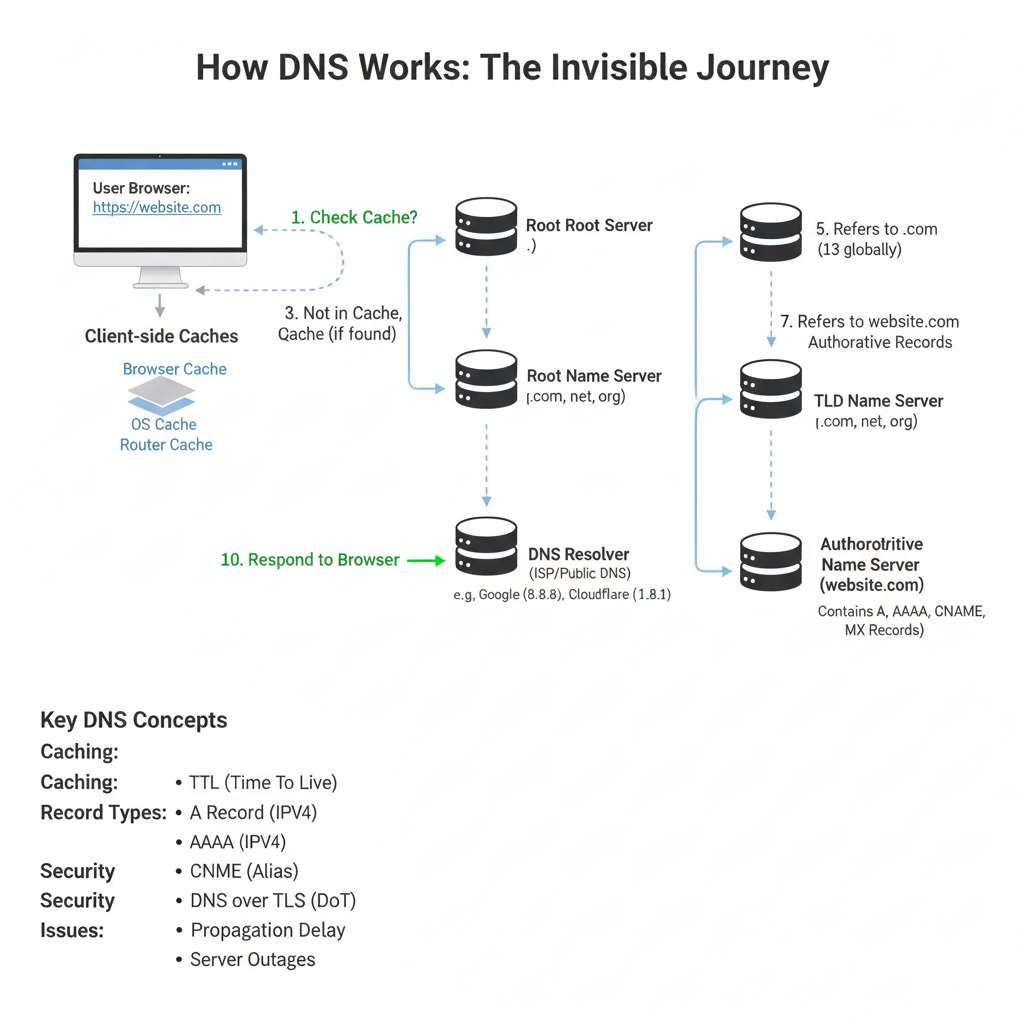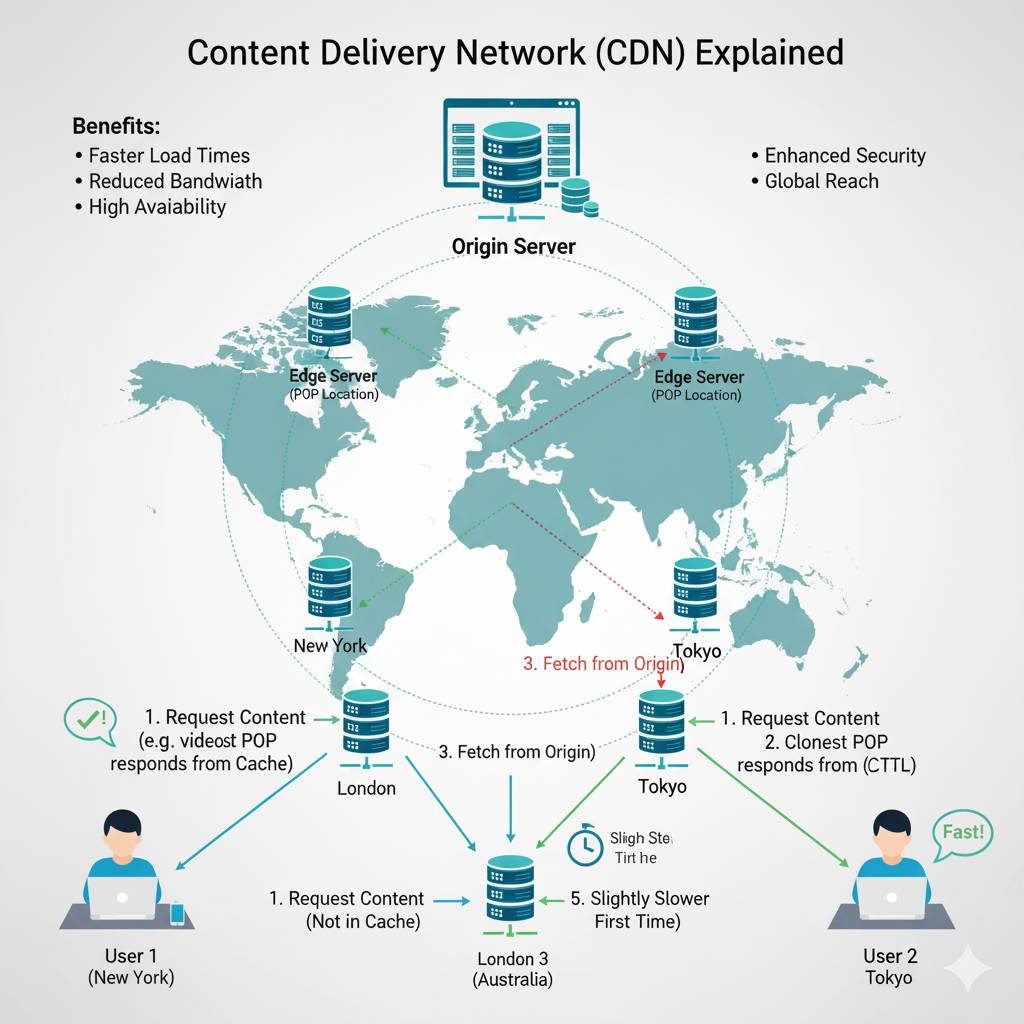Introduction
If you're a web developer or DevOps engineer, understanding how DNS (Domain Name System) works is essential. Every time you type https://website.com into your browser and press Enter, DNS translates that human-readable domain into an IP address that your computer can connect to.
Think of DNS as the Internet’s phonebook — it maps domain names to machine-readable IP addresses. Without DNS, you’d have to remember long strings of numbers instead of simple names like google.com or github.com.
The Four Key DNS Components
When you request a webpage, four types of DNS servers work together to return the correct IP address:
DNS Resolver (Recursive Resolver)
The request first goes to a DNS Resolver, usually managed by your ISP or a public DNS service like Google DNS (8.8.8.8) or Cloudflare DNS (1.1.1.1). If the answer is cached, it responds immediately. Otherwise, it queries other DNS servers on your behalf.
Root Name Server
If the answer is not cached, the resolver asks a Root Name Server. There are 13 root servers globally, managed by ICANN partners. Root servers don’t hold exact domain records but direct the resolver to the correct TLD name server (for example, .com, .org, .net).
TLD Name Server
The Top-Level Domain (TLD) server contains records that point to authoritative name servers for all domains under its extension. For example, the .com TLD server will point to the authoritative server for website.com.
Authoritative Name Server
Finally, the authoritative server holds the actual DNS records (A, AAAA, CNAME, MX, etc.). It responds with the IP address of the web server, which is then passed back to your browser. At this point, your browser can connect directly to the website.
DNS Caching (Performance Boost)
DNS lookups can take time, so caching is critical for faster performance:
- Browser Cache: Modern browsers temporarily store DNS records.
- Operating System Cache: OS-level caching ensures repeated requests don’t go over the network unnecessarily.
- Router Cache: Your router may cache DNS queries for devices on the same network.
- ISP/Public Resolver Cache: Large resolvers like Google and Cloudflare store millions of records globally.
If the IP is found in any of these caches, the lookup process is skipped, saving time.
Important DNS Concepts Developers Should Know
TTL (Time To Live)
Each DNS record has a TTL value that tells caches how long they can store it before re-checking.
Common DNS Record Types
- A Record: Maps a domain to an IPv4 address.
- AAAA Record: Maps a domain to an IPv6 address.
- CNAME Record: Alias for another domain.
- MX Record: Defines mail servers for email delivery.
- TXT Record: Stores text info (for example, SPF, DKIM for email security).
Modern DNS Security
- DNS over HTTPS (DoH): Encrypts DNS queries using HTTPS.
- DNS over TLS (DoT): Encrypts DNS queries at the transport layer.
These prevent DNS spoofing and eavesdropping.
Common DNS Issues
- Propagation delay: DNS changes may take hours to spread globally due to caching.
- DNS spoofing/cache poisoning: Attackers manipulate DNS records to redirect traffic.
- Server outages: If an authoritative server goes down, domains may become unreachable.
Conclusion
DNS is one of the most fundamental systems that keeps the internet running. By understanding how DNS works, from resolvers to caching, developers and DevOps engineers can troubleshoot issues, optimize performance, and implement modern DNS security protocols.
Next time you type a URL in your browser, remember the invisible DNS journey happening behind the scenes.
Leave a comment
Your email address will not be published. Required fields are marked *



